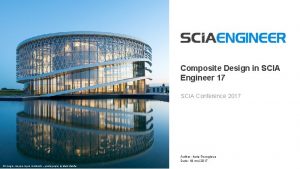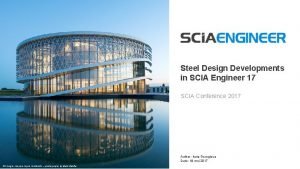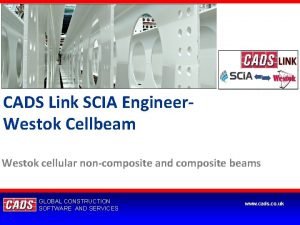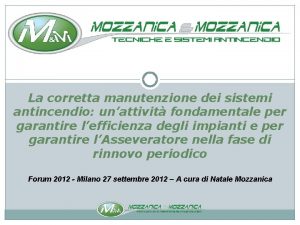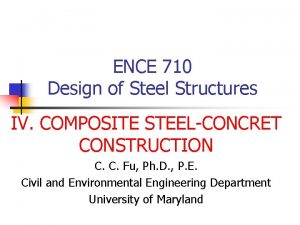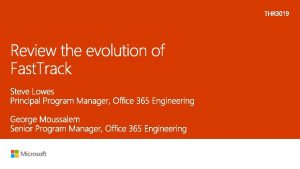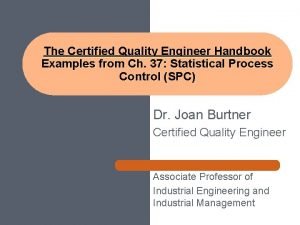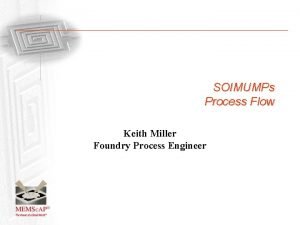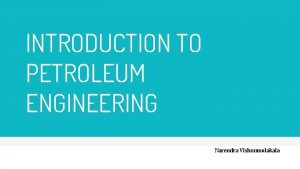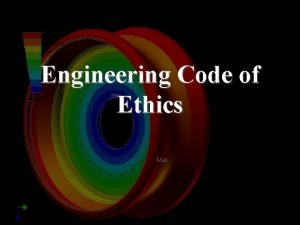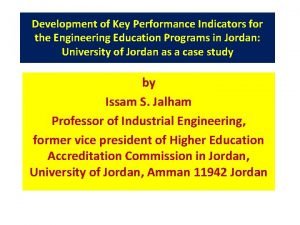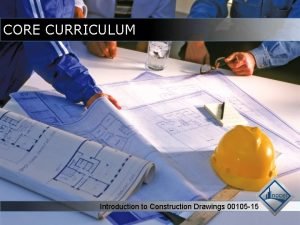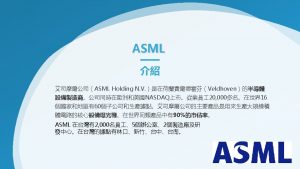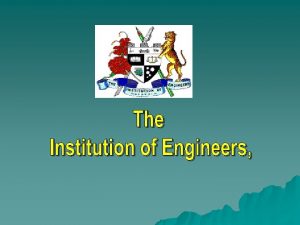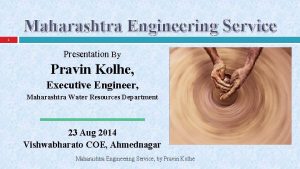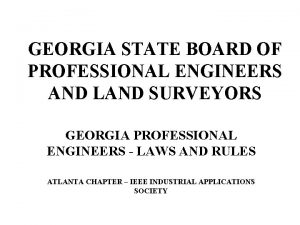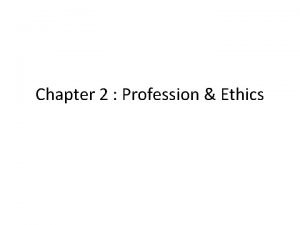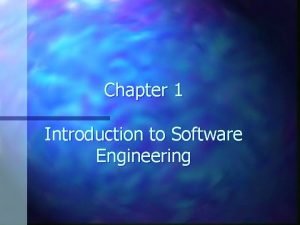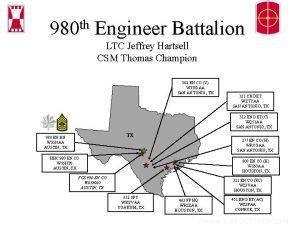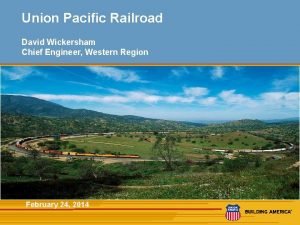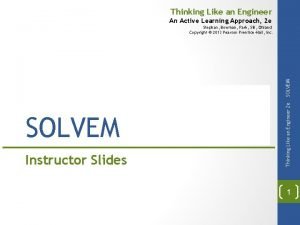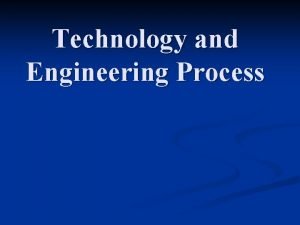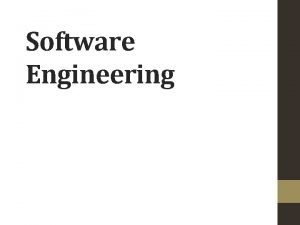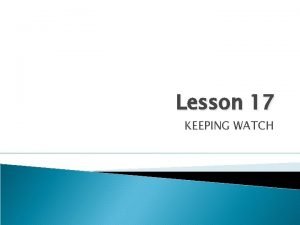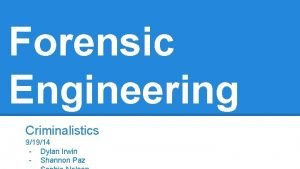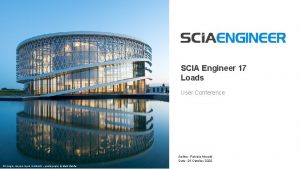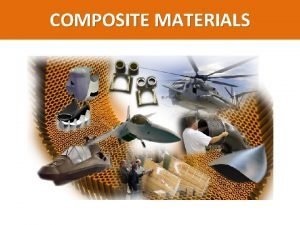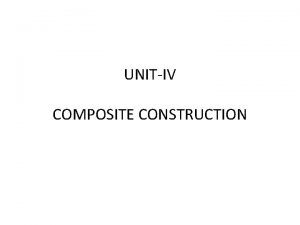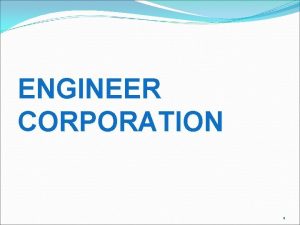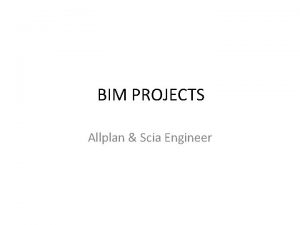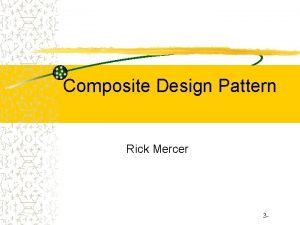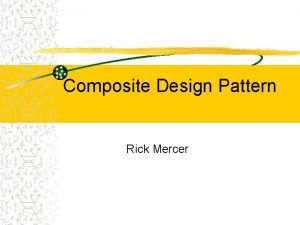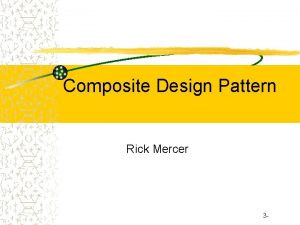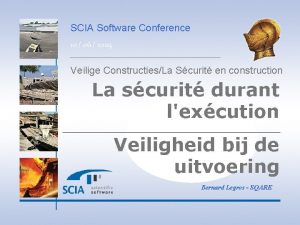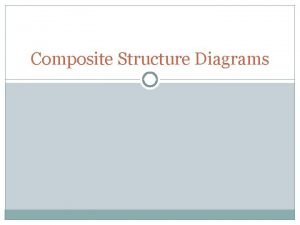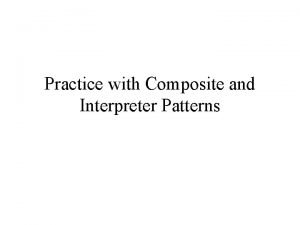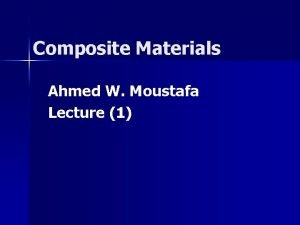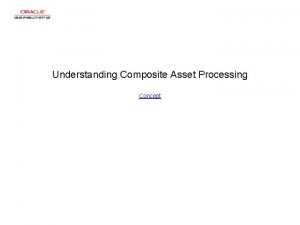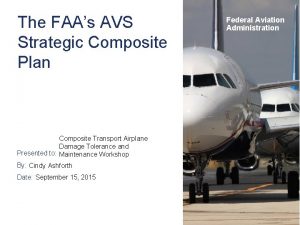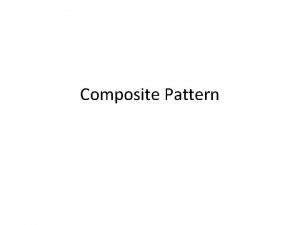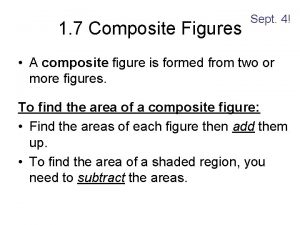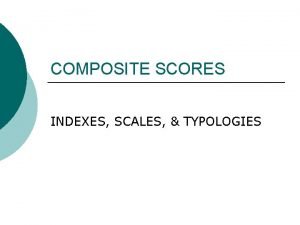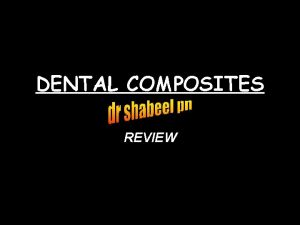Composite Design in SCIA Engineer 17 SCIA Conference
















































- Slides: 48

Composite Design in SCIA Engineer 17 SCIA Conference 2017 Author: Iveta Georgieva Date: 18 mei 2017 © Images Jaspers-Eyers Architects – photography by Mark Detiffe

Composite beam design in SCIA Engineer Analysis model features Load generation and combination management Section & member checks Advantages Example

Analysis model features FE model of slab and beams


FE model: slab & beams Slab: physical object (orthotropic) staged sheeting only indicated bending stiffness neglected Beams: T-section (steel + concrete) properties from 3 D model partial connection

FE model: slab & beams Beams Slab Composite section Membrane stiffness Bending stiffness Weight Partial shear connection Distributes load

Analysis model features Diaphragms & Load panels

Diaphragms & Load panels Lateral loads: Rigid diaphragms composite decks computational efficiency results as expected Semi-rigid diaphragms explicit stiffness composite deck with openings Flexible diaphragms metal decks (roofs) Flexible diaphragm

Diaphragms & Load panels Gravity loads: Tributary area: robust derivation (Voronoi algororitm) one-way and two-way slabs openings FEM method general (curved edges, etc. ) rigid/pinned

Diaphragms & Load panels Tributary area: one-way (composite) slab vs two-way (e. g. , concrete) slab

Diaphragms & Load panels Tributary area:

Diaphragms & Load panels Tributary area:

Comparable to hand calcs…

Comparable to hand calcs…

Comparable to hand calcs…

Analysis model features FEM Formulation

FEM Formulation (alternative) Beams and slab: (partially) connected load path follows actual bending stiffness (no load panel) downsides: parasitic moments not comparable to hand calculations execution on site differs from pure FEM ‘Standard’ vs ‘advanced’ composite beams impact on axial force in beams axial force design not described in EN 1994 -1 -1

Edge beams take more than internal beams…

Edge beams take more than internal beams…


Standard FEM Tributary area

Parasitic moments in primary beams

Analysis model features Effective width


Effective width Determined from 3 D model: span length detection of: slab edges neighbouring elements openings BCs (simple/continuous beams, cantilevers) used in FE analysis

Analysis model features Construction stages

Construction stages Final stage long-term Final stage short-term Steel members and sheeting alone Composite deck Creep in concrete Full concrete stiffness Loads: Construction stage self-weight dry concrete imposed load fresh concrete finishing wind construction loads partitions, etc. snow, etc. Handled automatically On the level of Load Cases

Construction stages Construction stage Steel members and sheeting alone Final stage long-term Final stage short-term Composite deck Creep in concrete Full concrete stiffness

Load generation & combination management Fresh vs Dry concrete

Fresh vs Dry concrete Automatically handled: material property fresh concrete (self)weight: variable load in construction stage dry concrete (self)weight: long-term load in final stage no ponding: manual, by user!

Fresh vs Dry concrete Automatic selfweight split: steel structure fresh concrete dry concrete

Load generation & combination management Load combinations

Load combinations Generated and updated: on running analysis updated with new loads & cases per stage and limit state conversion to manually-handled possible Construction stage: self-weight, fresh concrete, construction loads, etc. Final stage: self-weight, partition walls, imposed loads, snow, wind, etc.

Load combinations Eliminates doubts about the placing of loads into combinations

Section & member checks Construction stage

Construction stage checks ULS: shear resistance bending moment resistance LTB SLS: deflection

Section & member checks Final stage

Final stage checks ULS: SLS: sufficient shear connection deflection sufficient section class and reinforcement simplified vibration check moment, shear, LTB longitudinal shear in concrete slab crushing of concrete flange cracking in concrete

Section & member checks Fire conditions

Fire conditions Accidental combination: all failure modes relevant for ULS ISO 834 fire curve reduced material properties depth of fire impact in concrete slab

Advantages Designing composite with SCIA Engineer

Advantages in designing composite with SCIA Engineer Flexibility: analysis model features: choice of formulation load paths, stiffness, etc. Results: clear reports graphs generation of combi-keys




Example Live Demo

Version 18. 0 extensions Checks: segmented stud design multi-parameter optimisation design for web openings Analysis: nonlinear analysis with composite

Thank you for your attention! i. georgieva@scia. net www. scia. net
 Scia engineer 17
Scia engineer 17 Scia price list
Scia price list Scia engineer 2017
Scia engineer 2017 Westok
Westok Moment of inertia beam
Moment of inertia beam Scia antincendio esempio
Scia antincendio esempio Which engineer may design a gps for your vehicle
Which engineer may design a gps for your vehicle Composite column design
Composite column design Duluth energy design conference
Duluth energy design conference Microsoft fasttrack engineer
Microsoft fasttrack engineer Certified quality engineer handbook
Certified quality engineer handbook Tbpe ethics exam answers
Tbpe ethics exam answers Soimumps
Soimumps Palo alto certified network security engineer
Palo alto certified network security engineer Lego therapy builder engineer supplier
Lego therapy builder engineer supplier Spacex engineers salary
Spacex engineers salary Petroleum engineer pros and cons
Petroleum engineer pros and cons Indefinit artikel
Indefinit artikel Ceng 考牌
Ceng 考牌 Fnd engineer
Fnd engineer Nspe creed
Nspe creed Engineering change request
Engineering change request Computer science vs software engineering
Computer science vs software engineering Engineering key performance indicators
Engineering key performance indicators 00105 introduction to construction drawings
00105 introduction to construction drawings Career day presentation ideas engineer
Career day presentation ideas engineer Define aerospace engineer
Define aerospace engineer System install engineer
System install engineer Professional engineer interview questions
Professional engineer interview questions Technical sales engineer jobs
Technical sales engineer jobs Pico engineering notation
Pico engineering notation Reverse percentages worksheet
Reverse percentages worksheet Security architecture for systems engineer sase 500 651
Security architecture for systems engineer sase 500 651 Pravin kolhe
Pravin kolhe Kamal field engineer
Kamal field engineer Professional engineer georgia
Professional engineer georgia Characteristics of professional ethics
Characteristics of professional ethics System engineer chap 1
System engineer chap 1 980th engineer battalion
980th engineer battalion Chief engineer of the union pacific railroad
Chief engineer of the union pacific railroad Thinking like an engineer: an active learning approach
Thinking like an engineer: an active learning approach Engineering design process song
Engineering design process song Software engineering vocabulary
Software engineering vocabulary Software engineer technical questions
Software engineer technical questions If 7 cards are dealt from an ordinary deck
If 7 cards are dealt from an ordinary deck Chief engineer standing order sample
Chief engineer standing order sample Professional engineer japan
Professional engineer japan Flowchart of making sandwich
Flowchart of making sandwich Forensic engineer jobs
Forensic engineer jobs
